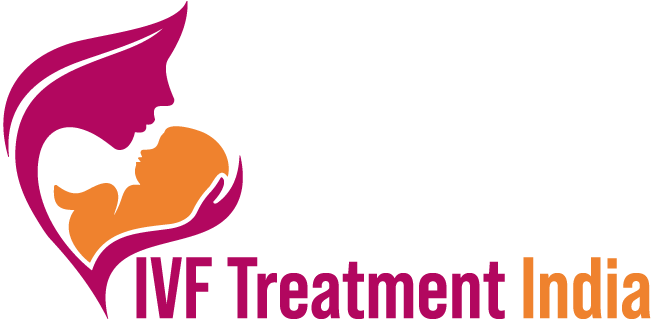Success rate for embryo transfer
Success rate for embryo transfer is completely dependent upon the health of the embryo. However, before analysing the success rate, first of all understand the embryo. What is an embryo? How does it form? How is it planted? And many more answers like this. Therefore, let’s begin.
Embryo transfer is a process where sperm and egg are combined together to form an embryo and later on it is implanted on a female’s uterus. It takes approximately 2 to 5 days after oocyte retrieval. In addition, oocyte removal is a process where eggs are removed from the ovaries and fertilized in the labs. IVF is a procedure where formation of egg and sperm happens outside the body. Also, IVF is helpful if the woman has frozen her embryo. The frozen embryo transfer can take place at different points of her cycle. It is one of the levels in In-Vitro fertilization.
Embryo transfer is required to place the embryo in the woman’s uterus so that later she can conceive a baby in her womb.
Read More: Fertility Treatment Cost
Different types of embryo transfer
There are various types of embryo transfer, but the procedure for extracting eggs from the ovaries and fertilizing them is the same. Let’s understand each type one by one.
- Fresh Embryo Transfer: Eggs are extracted from the ovaries, and within 1-2 days, they are cultured after fertilization. The specific and best embryos are then selected for transfer to the uterus.
- Frozen Embryo Transfer: In this method, many embryos are fertilized in a single cycle, and the best and healthiest embryos are stored for later use. This approach ensures that healthy embryos are not discarded, as they have been proven to increase the success rate of embryo transfer.
- Blastocyst Embryo Transfer: After fertilization, many healthy embryos develop. It is often beneficial to wait and observe if they progress to the blastocyst stage. The blastocyst stage has a higher chance of resulting in a successful embryo transfer.
- Assisted Hatching: This process weakens the outer layer of the embryo before it is transferred to the uterus. Although it does not directly enhance pregnancy or implantation rates, studies suggest that this method may be more beneficial with frozen embryo transfers.
Conditions Required for Embryo Transfer
IVF is often recommended when natural conception is not possible, or when other fertility treatments have failed. Several conditions may necessitate embryo transfer, including the following:
- Ovulation Issues: Irregular ovulation is one of the main reasons for delays in pregnancy or infertility. Ovulation disorders can lead to the release of fewer eggs, making fertilization more difficult.
- Damaged or Blocked Fallopian Tubes: The fallopian tubes serve as the pathway through which the embryo travels to reach the uterus. If the tubes are blocked or damaged, it becomes difficult to conceive, as the fertilized eggs are unable to reach the womb safely.
- Endometriosis: It is a disease in which a tissue that normally grows on the lining of the uterus grows outside the uterus.
- Uterine Fibroids: Uterine fibroids are small benign tumors that grow on the walls of the uterus. These fibroids can affect the eggs and have a severe impact on pregnancy, making conception more difficult.
- Issues in Sperm Production: Men are often equally responsible for infertility. Poor sperm quality, low sperm production, damaged testes, or unusual semen abnormalities can lead to male infertility, hindering successful conception.
Comparing Fresh and Frozen Embryo Transfer in IVF Treatment
According to research, fresh and frozen embryo transfer does not make any big difference. For example, fresh embryo transfer has a success rate of 24%, whereas frozen embryo transfer has a 19% success rate. Also, frozen embryos are sometimes healthier than fresh embryos and can be used for more than one cycle.
Therefore, if fresh embryos are unavailable, frozen embryos are good choices in IVF treatment. In fact, IVF treatment in India has advanced technology that can store your embryos for up to 20 years. Additionally, doctors freeze embryos for a second cycle. The success rate of embryo transfer completely depends on the health condition of the couple, the causes of infertility, or any genetic abnormalities.
Risks and Safety Measures of Embryo Transfers
Embryo transfer is a very safe procedure with very low risk factors. However, some related risks of embryo transfer include higher hormone stimulation and the possibility of a blood clot blocking a blood vessel. In addition, some women may rarely experience bleeding through the vaginal area, infections, or side effects from anesthesia.
The risk of miscarriage is the same as that of natural conception.
The most common and significant risk, however, is the possibility of multiple pregnancies, particularly in the case of transferring multiple embryos. Multiple pregnancies not only increase the potential risks for the baby but are also more common in IVF compared to natural pregnancies.
Conclusion
Success rate for embryo transfer is completely dependent upon the health of the embryo.
Embryo transfer is a process where sperm and egg are combined together to form an embryo and later on it is implanted on a female’s uterus. It takes approximately 2 to 5 days after oocyte retrieval. There are various types of embryo transfer, but the procedure for extracting eggs from the ovaries and fertilizing them is the same.
IVF treatment in India has advanced technology that can store your embryos for up to 20 years. It is helpful in conceiving pregnancy if you have poor egg quality, low sperm count or any other related cause.

